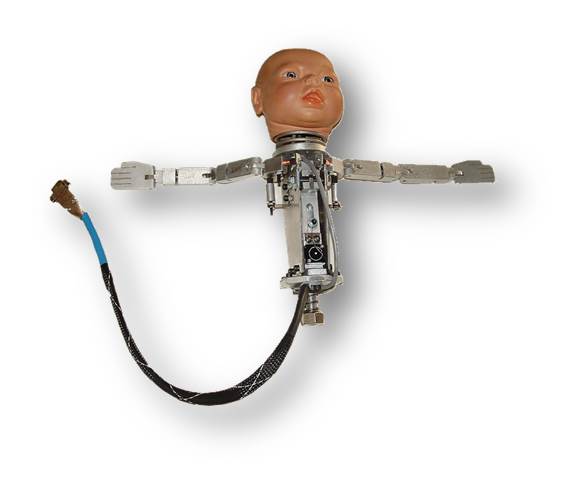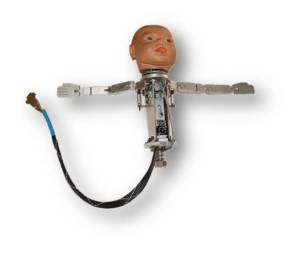Instrumented Fetal Model

Although commonplace, the natural delivery of a baby can have a variety of complications. When a baby is large compared to the birth canal, the shoulders may become wedged. In an effort to remove the child, the shoulder may become dislocated with the possibility of some nerve damage. In order to understand this phenomenon and to train doctors as to alternate delivery orientations, researchers at Johns Hopkins requested a fully instrumented fetus model.
Accudyne Systems developed this kinematically correct 10 pound baby. It has shoulders that dislocate under excessive pressure. The shoulders can also be adjusted to increase their width and thereby the delivery difficulty. Embedded sensors monitor head rotation, head tilt both laterally and front to back, and spine stretch. Coupled with a maternal model, doctors can practice many difficult deliveries in a short time in the laboratory before they ever work with a live patient.
- Anatomically correct motion
- Variable load, breakable collar bone
- 3 string potentiometers
- 1 foil potentiometer
- Variable shoulder width
- Measurable motions
- Head Rotation
- Head tilt (left/right)
- Head tilt (front/back)
- Head/Spine Extension

